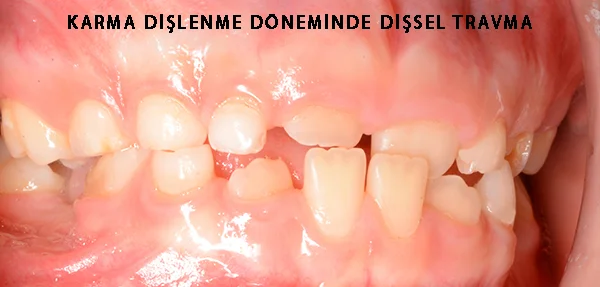Babies begin to erupt their milk teeth from the sixth month of live and have a total of 20 milk teeth at the age of 30 months (2.5 years old). At the ages of 6-7 years, the first permanent molar teeth come out from behind the milk teeth. In the same period, first the front incisors, the milk teeth begin to fall and the permanent teeth begin to erupt. We call this period between 6 to 12 years of age the mixed dentition period, when both milk and permanent teeth are present in the mouth.
In children with mixed dentition admitting for an orthodontic examination, we first check if there is any trauma (impact) caused by the teeth. Because such a trauma can cause irreversible damage to the teeth. The reason for this trauma may be tooth curvature or perplexity, crossing teeth, or jaw stenosis. If there is such a trauma in the teeth, we need to eliminate this immediately with a suitable device (appliance or braces) to protect the health of the affected teeth. This treatment lasts about 6 months to a year. When the permanent teeth erupt, the remaining defects are corrected by applying fixed appliances called brackets.
On the other hand, if there are slight curvatures in the teeth but there is no damage to the teeth by trauma, we often just monitor these patients. We follow the change of teeth at regular intervals. Again, we correct the tooth curvature using the necessary appliances according to the patient's needs at the most appropriate time. The aim here is to keep the braces in the mouth for the least amount of time.
In fact, starting orthodontic treatment in the mixed dentition period is very advantageous in that recovery is within natural and physiological limits. However, it can tedium in children as the treatment period is long.

